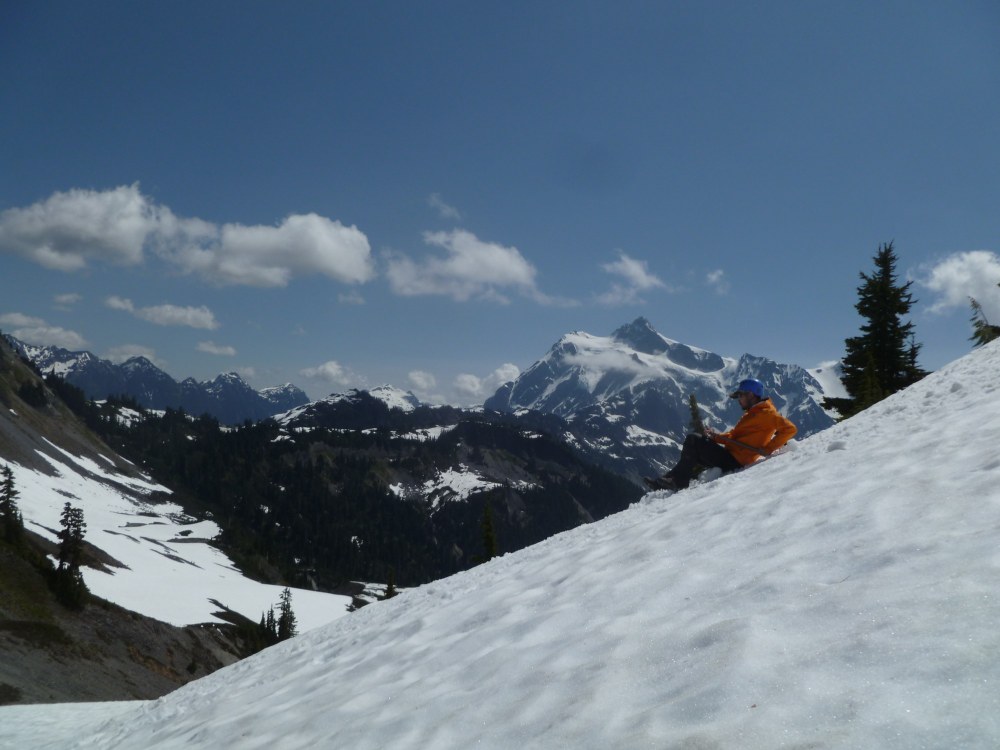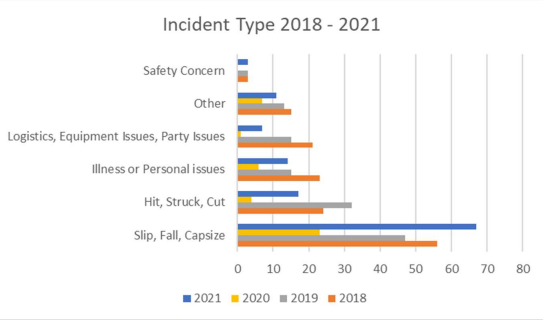
We all fall in the outdoors. Some fall more than others and, unfortunately, I fit within that category. I am uncoordinated and always have been. I fall all the time. That's one of the main reasons while I will never learn to climb mountains; I'd probably fall off one!
"I may fall due to lifelong clumsiness," I tell people who come on the trips I lead. "And if I do, it will probably bother you more than me. So I am just warning you ahead of time that you may just see me fall." (Yes. I really do say this to participants on the hikes I lead all the time.)
When I started hiking five years ago, I fell more on the trails than I had in a long time due to challenging myself with a harder activity. I got used to the falling, and I learned to prevent falls as much as possible too. I'm happy to report that the worst injury I've had is a scrape or two when wearing shorts.
Most falls and trips, like those I regularly experience, result in little to no injuries. But some, both within and outside of The Mountaineers, have led to major injuries and even fatalities.

The 2018-2021 Mountaineer Safety Report is available for all to review. Per the report, the number one reason for safety incidents is “slip, fall, capsize.” When looking at the exact incident details of slips and falls, there are some genuinely nice lessons that are worth sharing.
Highlights of Lessons Learned
- Going off trail leads to slips and falls. When stepping off trail, the terrain is less obvious, and maintaining good footing can be an issue. Some slips and falls were noted with just stepping off trail to let other parties pass. Be careful of where you plan to step and go slower when off trail.
- Be wary of dangerous trail features, water crossings especially. Water crossings are particularly noted to lead to falls and slips. Falls in water can also lead to other problems such as hypothermia depending upon the weather. Fully assess water crossings for safety and choose not to cross is fine if it is potentially unsafe.
- Look out for unexpected trail anomalies such as wet roots and logs. Be constantly vigilant, giving yourself space between yourself and fellow hikers to note these features, and avoiding stepping on them. Also do not hesitate to stop the group to get out sunglasses, glasses, or a headlamp as needed to maintain good visibility.
- Have the proper equipment for the outdoor activity. If the activity requires special equipment that you do not have, do not do it. Shoes or boots appropriate for the activity with good treads can prevent falls. Remember your snowshoes, crampons, or microspikes for winter travel. Trekking poles especially or even an ice axe can help tremendously for fall prevention by offering one or two additional points of contact and improving balance.
- Conditioning is especially important. Many incident reports highlight that poor conditioning for the activity or a faster-than-comfortable pace contributed to a fall or slip. Choose an activity that you can do safely based upon personal conditioning. Eat and drink what your body needs to maintain your conditioning during the activity. If the group is traveling too fast for you, please speak up so the group travel pace is safe for all. Trying to keep up with others leads to physical exhaustion, poor footing, and a possible fall.
- Practice specific climbing, intermediate snowshoe, and scrambling skills to be able to use them safely when needed. Good, comfortable ice axe use requires ongoing practice. Climbing in a gym does not mean you can climb at that level outdoors, and it is recommended that you climb at a more conservative level for outdoor practice. Practice your hand and foot hold skills in all situations to learn how to avoid wet moss, loose dirt, or gravel areas.
- Lastly: COMMUNICATE! Simple communication to the group that others are passing can prevent a fall. If you are aware of an unsafe or potential unsafe situation, or you feel uncomfortable with the situation, speak up in a thoughtful and respectful way. Such communication should be appreciated and welcomed by all. An injury turns a fun outdoor activity into an “un-fun activity” so I want those traveling with me to speak up. Other leaders support this too.
So now, get outside and have fun safely!
Main image of a scrambling student practicing safe glissading skills to use in case of a slip or fall. Photo by Tab Wilkins.
Add a comment
Log in to add comments.Observant and trail-wise leaders inform followers of anticipated terrain issues. And participants encountering slip, trip, fall conditions pass them back -- but this requires a direct request to do so and practice along the way. Further, the sweep may observe risk-inviting practice by those ahead that the leader misses. Communication up and down the party helps here.
 Lisa McPeak
Lisa McPeak